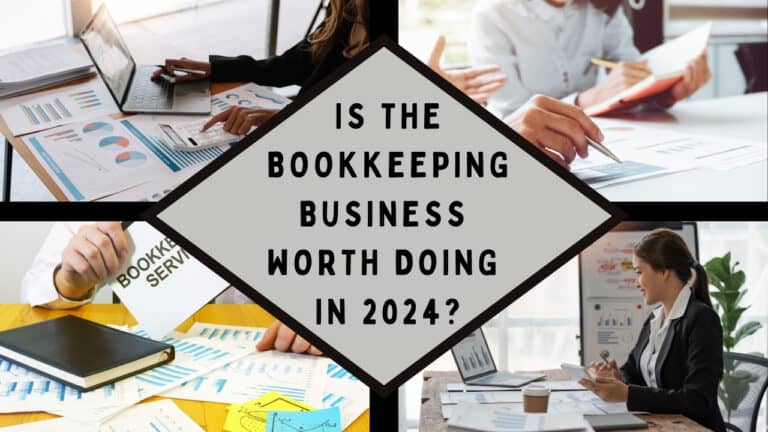Bank Reconciliation Automation Guide
In today’s fast-paced financial landscape, the demand for accuracy and efficiency has never been higher. Enter bank reconciliation automation, a game-changer reshaping how businesses manage their finances. But what exactly is it, and why is it becoming indispensable? Let’s dive in and discover how this technology is not just a tool but a financial revolution.
What is Bank Reconciliation Automation?
At its core, bank reconciliation automation uses advanced software to compare bank statements with corresponding ledger entries automatically. This process helps businesses ensure that their financial records are accurate and consistent without the time-consuming and error-prone task of manual checking.

The Need for Automation in Financial Reconciliation
Imagine this: at the end of every month, your finance team spends countless hours manually matching transactions from bank statements to various journal entries, balance sheets, and accounting records. Sound familiar? This traditional method is more than just tedious; it’s also susceptible to human error. Here’s where bank reconciliation automation comes in, turning a day-long chore into a task that can be completed in minutes.
The Role of Technology in Automation
Technologies like robotic process automation (RPA) play a pivotal role in this transformation. By automating routine, repetitive tasks, RPA speeds up the bank reconciliation process and significantly reduces the chances of mistakes attributed to human error. This means more time for your team to focus on critical analytical tasks that can propel your business forward.
Critical Benefits of Bank Reconciliation Automation
- Accuracy and Consistency: Automated systems stay energized and avoid careless mistakes. They ensure that every transaction is accounted for, from bank deposits to credit card charges.
- Real-Time Financial Data: Automation allows for real-time monitoring of banking transactions. This instant access to financial data can be a game-changer for making strategic decisions.
- Time Savings: What was once a time-consuming chore is now a swift, efficient process. Automation can save time, allowing your team to focus on more value-added activities.
- Scalability: Transaction volume increases as your business grows. Bank reconciliation automation can quickly scale to handle increased data without additional workload.
How Does Bank Reconciliation Automation Work?
Let’s break it down with a simple metaphor. Consider automated bank reconciliation as a highly efficient matchmaker at a dance, swiftly pairing the right dancers (transactions) together based on their dance styles (details in the statements and ledger). Here’s how it typically unfolds:
- Data Import: The software automatically imports data from bank accounts and accounting software.
- Transaction Matching: It then uses algorithms to match transactions on bank statements with those recorded in the general ledger.
- Exceptions Handling: Any unmatched or mismatched transactions are flagged for review, ensuring that discrepancies are addressed promptly.
Common Challenges and How to Overcome Them
While the advantages of automating the bank reconciliation process are clear, it has challenges. Data discrepancies, integration issues with existing accounting software, and adapting to a new system can all pose hurdles. However, these can be mitigated with proper planning, training, and choosing the right automation solution that aligns with your business needs.
Future Trends in Bank Reconciliation Automation
With AI and machine learning advancements, the future of bank reconciliation automation is exciting. These technologies promise even greater accuracy and the ability to predict and reconcile discrepancies before they become issues. As real-time financial data becomes the norm, the automation landscape will only continue to evolve, offering more robust and intelligent solutions.

Why Choose Our Bank Reconciliation Automation Services?
Now that you’ve seen the transformative impact of bank reconciliation automation, you might be wondering how to get started. Our expert services can help here. We specialize in integrating cutting-edge automation solutions that streamline your financial processes, reduce errors, and save valuable time. By choosing us, you’re not just adopting new software but also embracing a strategic advantage that keeps you ahead in financial management.
In conclusion, bank reconciliation automation is vital for any business aiming to enhance its financial operations as the digital world accelerates. It’s about more than keeping with the times and setting the pace. Are you ready to revolutionize your reconciliation process? Let’s make it happen together.
FAQS
Bank reconciliation automation uses software to automatically match transactions listed in bank statements with entries in accounting records like the general ledger. This technology ensures accuracy and efficiency by automating what was traditionally a manual and error-prone process.
Automating your bank reconciliation process increases accuracy, reduces the risk of human error, provides real-time access to financial data, saves significant time previously spent on manual reconciliation, and scales effortlessly as your business grows.
Technologies involved include robotic process automation (RPA) and advanced algorithms that automate data entry and transaction matching. Artificial intelligence (AI) and machine learning (ML) are increasingly being integrated to enhance these systems’ accuracy and predictive capabilities.
Yes, most bank reconciliation automation solutions are designed to integrate seamlessly with various accounting software. This integration simplifies reconciliation by allowing automatic data transfer and matching between systems.
When choosing a service, consider the compatibility with your current systems, the ease of implementation, the level of customer support provided, and the specific features that suit your business’s needs. Additionally, look for solutions that offer robust security measures to protect your financial data.







